Nubuck, suede, and roughout leather each showcase unique traits that play a vital role in determining the durability, texture, and overall aesthetic of your leather products. These materials are prevalent in an array of items, from elegant shoes to chic jackets, each requiring specific care techniques to maintain their quality. Nubuck is celebrated for its exceptional durability, stemming from its dense grain structure, making it a preferred option for items subjected to frequent use. On the other hand, suede boasts a softer, more luxurious feel, making it ideal for trendy fashion pieces. Roughout leather is particularly susceptible to water damage, demanding extra care and protective measures. By grasping these key differences, you will be better equipped to choose the most appropriate leather type for your needs and establish a proper maintenance routine. This detailed guide will help you identify each leather type and offer best practices for their care.
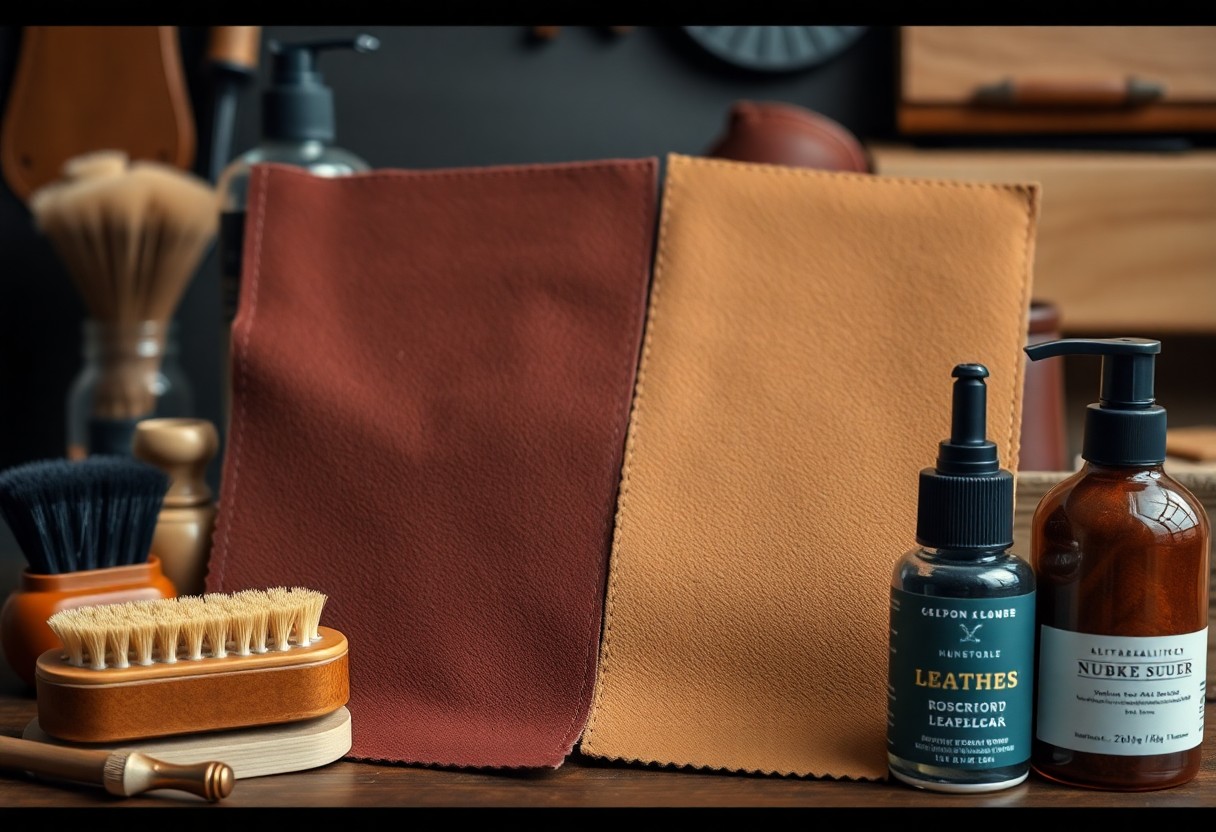
Unlock the Distinctive Features of Napped Leather Types
For enthusiasts of leather and prospective buyers alike, understanding the diverse napped leather types is essential for making informed purchasing choices. These categories include nubuck, split suede, full reverse suede, and roughout leather. While they may have a similar appearance at first glance, each type possesses its own unique characteristics and intended applications. By familiarizing yourself with these differences, you empower yourself to select the most suitable leather for your specific needs and preferences.
| Type | Key Features |
|---|---|
| Nubuck | Sanded grain surface, durable |
| Split Suede | Made from corium layer, less durable |
| Full Reverse Suede | Full grain leather reversed, strong core |
| Roughout | Untreated corium surface, rugged texture |
| Care Requirements | Waterproofing needed for all types |
Delve into the Remarkable Qualities of Nubuck Leather
Although nubuck may resemble suede, it distinguishes itself by providing superior durability due to its unique grain leather construction. The surface of nubuck is delicately sanded to create a fine, velvety nap, which enhances its resistance to wear compared to other napped leathers. This quality makes nubuck a highly sought-after choice for consumers looking for longevity in their leather products, especially in environments subject to frequent wear and tear.
Gain Insight into the Attributes of Split Suede Leather
To truly understand split suede, one must first consider its origins, as it is crafted from the corium layer of the hide. This leather variety exhibits loose fibers and a soft texture, making it tactilely appealing, yet it requires careful maintenance due to its porous nature. The different types of split suede can significantly differ based on the animal hide utilized and the specific processing techniques adopted, ranging from lightweight fashion suede to heavy-duty footwear suede, each catering to distinct applications in both fashion and function.
Discover the Unique Composition of Full Reverse Suede Leather
Understanding full reverse suede involves recognizing its distinctive construction, which is fundamentally a full-grain leather turned inside out. This creative approach yields a suede-like exterior while maintaining the structural integrity of the full-grain leather. The preserved grain layer contributes to enhanced water resistance and durability when compared to split suede, making it a favored option for upscale footwear and leather products that demand both aesthetic charm and functional reliability.
Often found in premium goods, the unique attributes of full reverse suede provide a sophisticated look while ensuring durability and performance.
Investigate the Distinctive Qualities of Roughout Leather
The defining traits of roughout leather are its deliberately unrefined surface and impressive durability. With its rugged texture, it stands out from other napped leathers, appealing to those who prefer a more robust visual style. The construction of roughout leather retains the full hide structure, making it particularly well-suited for work boots and outdoor gear where resilience is critical. You will appreciate how this leather type ages naturally, developing a unique patina over time that enhances its aesthetic appeal.
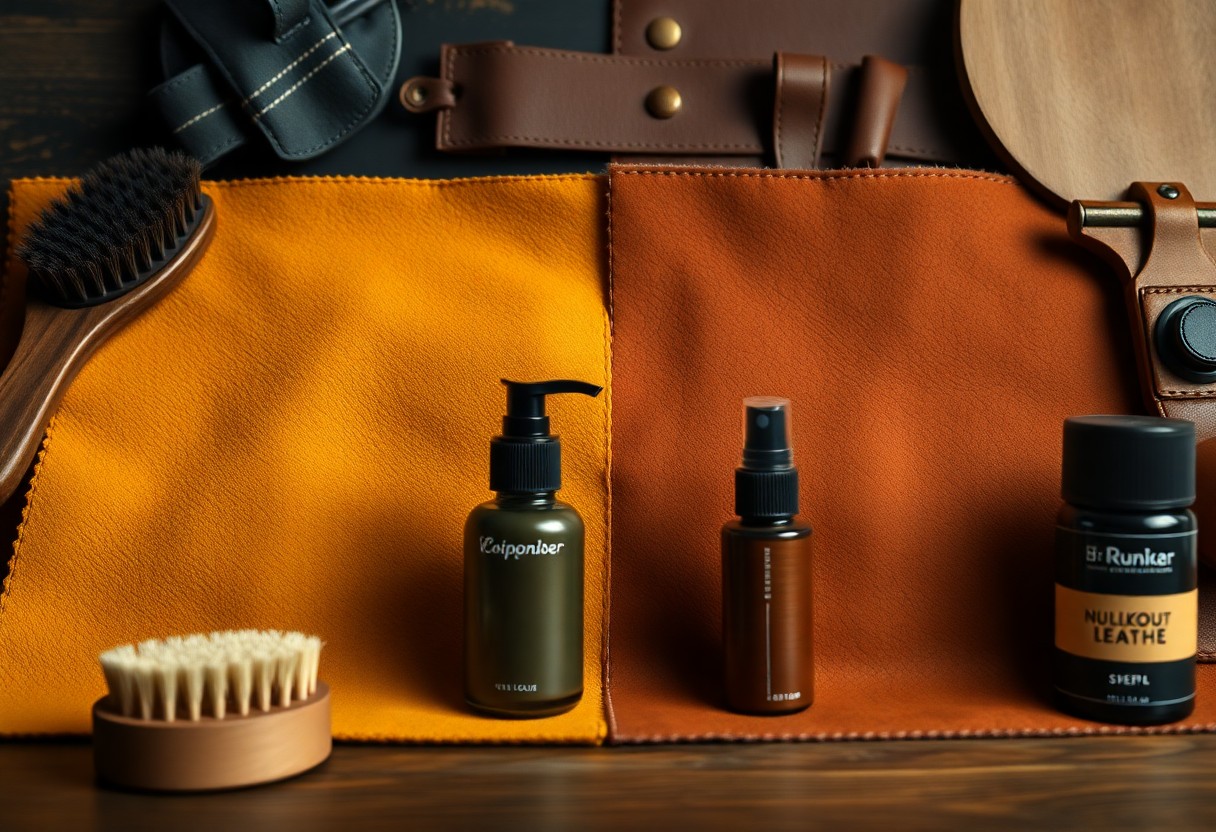
Recognize Key Differences Between Leather Types for Smart Choices
Comprehending the fundamental differences among nubuck, suede, and roughout leather is crucial when evaluating their construction and individual characteristics. Each type offers unique properties that are appropriate for various applications and conditions of wear. By understanding these distinctions, you can make informed decisions regarding your leather goods, ensuring that you select the best options tailored to your lifestyle and needs.
| Feature | Characteristics |
|---|---|
| Origin | Grain layer vs Corium layer |
| Surface | Fine vs Coarse nap |
| Durability | High to moderate resistance |
| Maintenance | Regular to intensive care |
| Applications | Footwear to accessories |
In-Depth Comparative Analysis of Napped Leather Structures
Next, we will explore how these leather types differ in their essential structures:
| Leather Type | Structure |
|---|---|
| Nubuck | Sanded grain layer |
| Suede | Split corium layer |
| Roughout | Reversed full grain |
Examining Surface Textures for Enhanced Understanding
To better understand the surface characteristics, one should analyze the nap length and texture of each leather type. Nubuck features the shortest and finest nap, resulting in a smooth feel, whereas roughout presents a more irregular, coarse texture, contributing to its ruggedness. The material differences in texture significantly affect the way each leather type reacts to wear and treatment, impacting their overall care and longevity.
Notably, suede develops a unique patina over time, adding charm to its appearance, while nubuck maintains a more consistent look throughout its lifespan, showcasing its durability and resilience.
Critical Durability Factors to Consider for Longevity
If longevity is your primary concern, it’s vital to keep in mind the following key factors that influence the durability of leather:
- Water resistance varies significantly among types
- Wear patterns develop uniquely based on usage
- Structural integrity is determined by the specific leather type
Any damage to the leather surface necessitates specialized repair techniques to restore it effectively.
Environmental factors also play a significant role in durability:
- UV exposure can affect color retention
- Temperature fluctuations impact leather flexibility
- Moisture levels determine overall material stability
When selecting protective treatments, ensure they are compatible with your specific leather type for optimal outcomes.
Comprehensive Care and Maintenance Strategies for Napped Leathers
Unlike smooth leathers, napped leathers demand specialized care techniques to preserve their texture and overall appearance. Your nubuck, suede, and roughout leather items require regular brushing, protection against moisture, and careful cleaning to maintain their unique properties. These materials are more vulnerable to staining and water damage than smooth leather, highlighting the necessity of proper maintenance routines.
Proven Cleaning Techniques for Napped Leather Goods
To effectively clean your napped leather items, use a specialized suede brush and work in one direction to gently remove surface dirt. For tougher stains, a suede eraser can be quite helpful, and it’s advisable to avoid water-based cleaning methods whenever feasible. For more thorough cleaning, exclusively use products designed for your specific leather type, as traditional leather cleaners can negatively impact the nap.
Protective Strategies for Napped Leather Longevity
To protect your napped leather, applying a high-quality water repellent spray is essential. Treat new items before their initial use and plan to reapply this protection every 3-4 months. This strategy creates a protective barrier while ensuring the leather remains breathable.
Understanding the proper methods of protection is crucial for extending the lifespan of your leather goods. Regular maintenance includes vigilant inspections for wear spots, reapplying protective treatments after heavy usage, and avoiding exposure to direct heat or sunlight. Customize your protection routine to align with the frequency of use, increasing the application frequency for items worn daily.
Best Practices for Storing Napped Leather
When it comes to storing napped leather, paying close attention to the environment is critical. It is best to keep your items in a cool, dry area away from direct sunlight. For shoes, using shoe trees will help maintain their shape, and stuffing bags with paper can provide additional support. Never store leather items in plastic bags, as they require airflow to maintain their quality.
For long-term storage, opt for breathable fabric bags, ensure good air circulation, and routinely check for moisture or mold. Aim for 40-50% humidity in the storage area to prevent the leather from drying out or developing mildew. Keep items separated to avoid color transfer and to preserve their individual shapes.
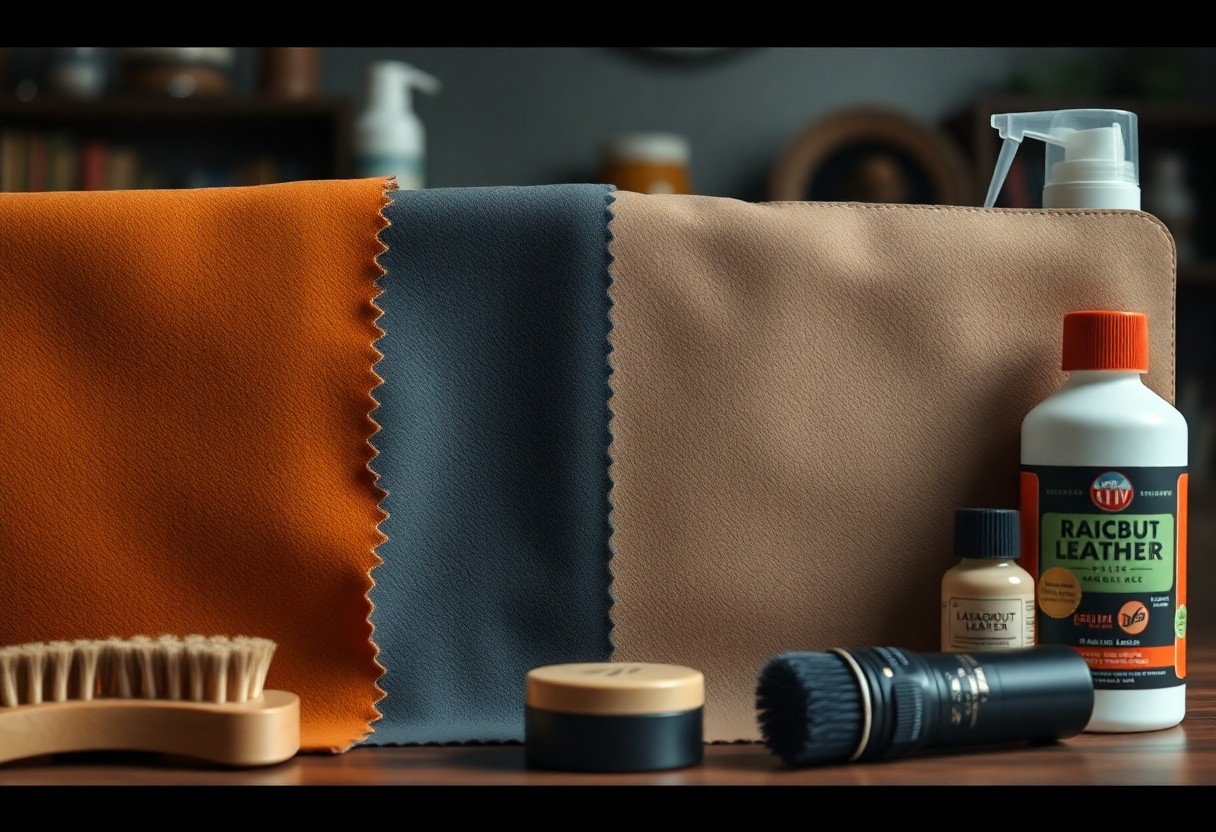
Investigating Practical Uses and Applications of Various Leather Types
Your choice of nubuck, suede, or roughout leather greatly influences the durability and visual appeal of the finished product. Each type serves distinct roles based on their unique attributes. Nubuck is perfect for high-durability applications, while suede provides a softer, more flexible option for fashion items, showcasing its versatility across different contexts.
Footwear Selections: Picking the Right Leather Type
While all three leather types are suitable for footwear, each one has its own advantages. Nubuck is exceptional for outdoor and work boots due to its unparalleled durability, while split suede emerges as an excellent option for dress shoes and casual sneakers. Roughout leather, with its rugged surface, is ideal for crafting high-performance hiking boots that effectively resist scuffs and scratches.
Apparel Production: Choosing the Right Leather for Clothing
The applications of these leathers in garment production vary widely based on their unique characteristics. Suede is particularly well-suited for fashionable jackets, while roughout leather is preferred for durable workwear that withstands the demands of daily use. Although nubuck is less frequently used in clothing, it serves as an excellent option for protective panels in motorcycle gear.
For example, split suede is commonly used in lightweight jackets and vests, whereas roughout leather is favored for heavy-duty work shirts and pants. The choice of material typically corresponds with the intended use of the garment—fashion items generally incorporate softer suedes, while protective gear benefits from sturdier nubuck or roughout alternatives.
Accessory Creation: Utilizing Leather Types for Unique Designs
These leathers also play a crucial role in crafting various accessories. Nubuck is ideal for creating stylish watch straps and belts, while suede is well-suited for crafting attractive bags and wallets. Roughout leather is particularly effective for durable outdoor gear, such as backpacks designed for rugged conditions.
With thoughtful material selection, you can create accessories that align perfectly with their intended purposes. Split suede works best for decorative items, while nubuck and roughout excel in products requiring high wear resistance. Always consider potential water exposure when selecting the right leather type for outdoor accessories.
Recognizing Factors That Impact Leather Quality
It is crucial to understand that the quality of napped leather is influenced by several significant factors, including hide selection, tanning processes, and manufacturing techniques. The durability and appearance of the final product rely heavily on these key considerations.
Significance of Hide Selection on Leather Quality
To guarantee the highest quality, it is essential to recognize that premium hides originate from animals raised under optimal conditions. These hides exhibit fewer surface imperfections and showcase a more uniform fiber structure. The quality of your leather begins with selecting hides that possess minimal scarring and appropriate thickness, which greatly influences the final product.
Impact of Tanning Processes on Leather Attributes
The tanning process, whether it involves vegetable or chrome tanning, significantly affects the quality of the leather. Each method imparts unique characteristics regarding water resistance, flexibility, and color absorption. This critical phase demands meticulous control over temperature, pH levels, and chemical concentrations, as the durability and texture of your leather are directly influenced by these carefully monitored factors throughout the extensive 4-6 week tanning period.
Manufacturing Methods That Shape Leather Quality
During the production of napped leather, specialized buffing techniques are employed to create its distinctive surface texture. The final appearance of your leather is significantly affected by the depth of buffing and fiber exposure throughout this process. A consistent manufacturing approach is essential for ensuring uniform nap height and direction, as these elements directly correlate with the leather’s wear resistance and overall aesthetic appeal.
Evaluating the Advantages and Disadvantages of Napped Leather Types
Each type of napped leather possesses unique characteristics that make it suitable for various applications. Your decision between nubuck, suede, and roughout leather should be informed by your specific needs and intended use, ensuring that you select the best option for your situation.
| Pros | Cons |
|---|---|
| Unique aesthetic appeal | Requires regular maintenance |
| Soft, comfortable texture | More susceptible to water damage |
| Good breathability | Shows wear marks easily |
| Variety of color options | Requires special cleaning products |
| Versatile applications | Higher maintenance costs |
Exploring the Benefits of Each Napped Leather Type
Each type of napped leather provides specific advantages tailored to varying needs. Nubuck offers exceptional durability due to its dense grain structure, making it perfect for high-use items. Conversely, suede delivers excellent flexibility and softness, ideal for fashion-forward designs. Meanwhile, roughout leather fuses unique texture with strength, rendering it suitable for diverse applications.
Limitations and Considerations When Using Napped Leather
Despite their distinct characteristics, each leather type has its limitations. Water exposure can significantly damage untreated napped leathers, making consistent maintenance vital for preserving their appearance and integrity. Your choice should reflect your intended use: indoor applications pose fewer risks than outdoor scenarios, and factors like climate and frequency of wear will impact the leather’s durability and performance.
Ultimately, your understanding of nubuck, suede, and roughout leather will empower you to make informed decisions for your leather products. You can now identify the essential differences among these leather types based on their construction, durability, and maintenance requirements. By implementing the suitable care methods for each type—such as using waterproof sprays for nubuck, gentle brushing for suede, and tailored treatments for roughout leather—you can significantly prolong the life of your leather items. This knowledge equips you to choose the most appropriate leather type for your specific needs and maintain its quality over time.
Addressing Common Questions Regarding Napped Leather
What are the primary distinctions between nubuck and suede leather?
Nubuck utilizes the grain layer of leather, which is lightly sanded on the surface, leading to enhanced durability and water resistance. In contrast, suede is sourced from the softer bottom layer (corium) of the hide, making it more porous and less resilient. Additionally, nubuck features a shorter and finer nap compared to the longer, softer texture of suede.
What are the best practices for safeguarding and cleaning napped leathers?
For optimal care, apply a waterproof spray to all napped leathers before usage. Clean them with a specialized suede brush to effectively eliminate dirt and restore the nap. For stains, utilize dedicated suede or nubuck cleaners. Avoid exposing these leathers to heavy rain, and allow wet leather to dry naturally at room temperature. After drying, brush the leather to revitalize its nap.
What differentiates roughout leather from reverse suede?
Roughout leather retains the untreated and rough corium layer, while reverse suede has this layer sanded smooth. Both leather types feature the grain layer facing inward, enhancing their durability compared to split suede. However, roughout presents a more textured and uneven surface compared to the uniform nap of reverse suede. Both are ideally suited for unlined shoes due to the smoothness of their flesh sides.
The Article Guide to nubuck suede and roughout leather differences care tips and uses appeared first on My Shoes Finder
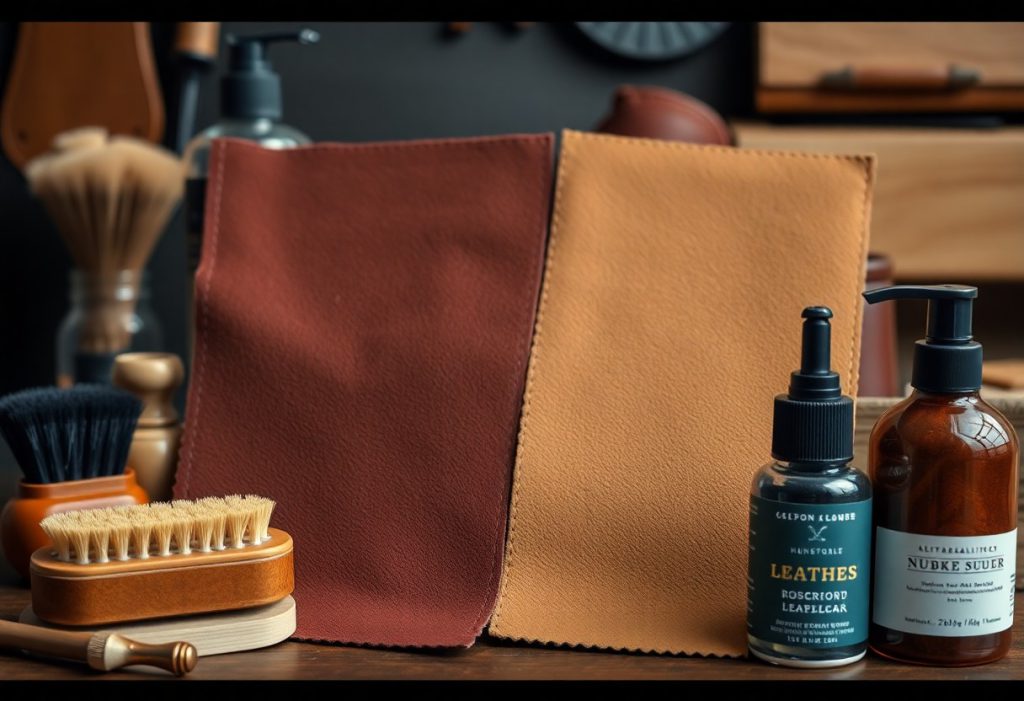
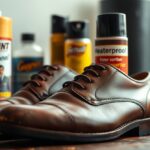
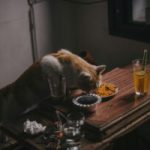
What an intriguing exploration of nubuck, suede, and roughout leather! Each material indeed brings its own unique story and character to the items crafted from it, reflecting not only the preferences of the consumer but also the careful consideration of artisans who work with these beautiful textures.
It’s fascinating to see how the nuances of different leather types can significantly influence both style and practicality in our wardrobes. I’ve always found nubuck particularly appealing for everyday items—its strength certainly gives it an edge, especially in footwear that needs to withstand daily wear. Suede, with its elegant charm, does feel like a special occasion material for me, though I often struggle with keeping it pristine.
This is such an interesting exploration of leather types! I’ve always been drawn to nubuck for its durability, especially for shoes that need to withstand a lot of wear—I’ve tried both suede and nubuck in everyday footwear, and the difference in maintenance is pretty notable. Suede feels amazing but I can’t help but feel anxious about stains or water damage; it’s a shame because the texture is just so luxurious.